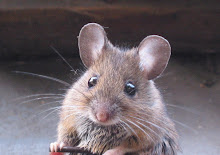This is the last of my vacation book reviews. Technically there's one more - The Island of Dr. Moreau - but I'm holding that to be part of my next Read It, Watch It, Watch It Again features ... if Blockbuster Online would just ever send me the first movie.
I did a really good job of selecting vacation books this year – not one of the ten I finished was a dog. (Can’t speak to the doggishness of the two I didn’t get to: The Nice and the Good by Iris Murdoch, and Neal Stephensons’ Anathem … except that I found both to be rather inprenetrable, but perhaps worth another try sometime.) But the final vacation novel, Donna Tartt’s lengthy (559 pages) The Secret History was just outstanding. Even though you learn who gets killed – and who kills him – on the very first page, this exciting book keeps you turning pages until the very end, learning the “why,” the “how” and the “then what?”.
Set on the fictitious Hampden College campus (a thinly veiled Bennington, the author’s alma mater), The Secret History is narrated by Richard Papen, a poor and lonely student from California. In his first days at college, he decides that he wants to be part of the small, elite Classics department, taught by only one professor, populated by only five other students. Richard gains entry to the class and, eventually, to the camaraderie of the other students: brilliant, brusque, wealthy Henry, the ostensible leader; big-hearted and sophisticated Francis; the beautiful twins, Camilla and Charles, elegant and wary; and big, goofy Bunny (“don’t call me ‘Edmund’”) Corcoran.
At first Richard is in heaven, loving his classes and spending all his time with his fine new friends, drinking, smoking, eating extravagantly, enjoying weekends at Francis’s aunt’s country house. Things get weird when Henry, Francis and the twins re-enact an ancient Greek rite with terrible consequences. The situation goes from bad to worse when Bunny, insanely jealous that he wasn’t included, blackmails them, threatening to tell their secret. Henry decides that Bunny must be silenced; the four others enlist Richard to help; and one hiking trip later, the threat has been eliminated.
But the book isn’t even half over at this point! And Tartt painstakingly follows the survivors’ unraveling as they try to come to terms with what they’ve done. Each character is fascinating, in turn attractive, repellent, pathetic and scary. Even at such a great length, nothing seems extraneous in this book. I wanted to know everything about these people and, once I did, could not turn my horrified eyes away.
Telling the audience whodunit right at the start is an ancient mode of storytelling, as Tartt herself explains in the included author interview at the end of the book (which I rather wish I hadn’t read: she comes off as a completely pretentious bitch, which I only find redeemable by the strength of her prose. But still.) But just because the reader knows the action that’s about to happen, they still have to guess at the events leading up to it, and the motivations for it, and the fall-out from it. In Tartt’s extremely capable hands, knowing who killed Bunny Corcoran doesn’t at all diminish the excitement and enjoyment of the story unfolding page by page.
4 hours ago






No comments:
Post a Comment